ETHICS STATEMENT: I don’t have any contracts with any camera manufacturer. I have done paid work for Canon & Sony, Panasonic. There are all one-off jobs, workshops, shoots through my time as a freelancer. I have turned down exclusivity from camera manufacturers in the past so I can remain impartial for my readers.
Early yesterday morning the press release dropped from Canon about the much-anticipated (and much leaked) replacement for the 4-year-old Canon 5D MKIII. It has been 4 and a half years since the MKIII came out and almost 8 years since the legendary MKII came out. There is much to be happy about in the list of specs. The 5D MK III improved in every way the features of its predecessor, both in video and stills, as does the 5DMK IV.
Whilst my vocation is with the moving image, I also take a huge amounts of stills. That is part of the reason why I love cameras that shoot great video and stills! This quite-long blog post takes a look at the significance the 5D line has had in video, especially for myself, and what the future holds.
THIS IS NOT A REVIEW. I do not review specs – I review hands-on practical shooting – so this is purely an assessment on those specs and what they mean.
First off, lets look at some specs of the new camera in relation to its main function, the reason the vast majority of people buy the camera…to take photos!
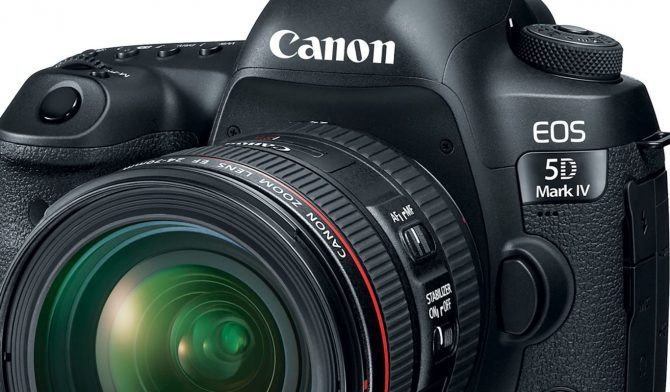
KEY IMPROVEMENTS:
The original MK1 has (a very similar to the Sony A7s) 12.8 megapixels, the MK II 21.2 and the MK III 22.30 and the MK IV a much improved 30.4 megapixels.
ISO sensitivity in stills is up (1 to 3) 50-6400, 50-25,600, 50-104,200 and the new camera has 50-150,000
Auto focus is a massive improvement. 9-point autofocus for I and II, 61 for III but still 61 again for the IV. So how is this better? Well the IV has the incredible dual pixel autofocus…more of that later.
Wi-fi is now built-in which is a huge bonus.
Continuous shots The 1 had 3 fps, the II 3.9 fps, the IV, 6fps continuous.
It has something called Dual Pixel raw stills, which capture two images from both of the dual pixel sensors, which lets you correct micro focus errors. This is not Lytro where you can set focus wherever you want, but it could be handy, especially when you take portraits and are in focus on the eyelashes but not the eyeballs, for example. I have not seen this feature in action, nor have I tried it.
Oh, and the screen resolution has been improved too.
These still features absolutely are improvements. They are not revolutionary and everything, other than the dual pixel, we have in other cameras.
This camera is the normal bodied flagship of their full frame cameras. The 1DX MKII is the true flagship, but that excellent camera is a beast that is mainly used by sports photographers who need the astonishing speed and rugged build.
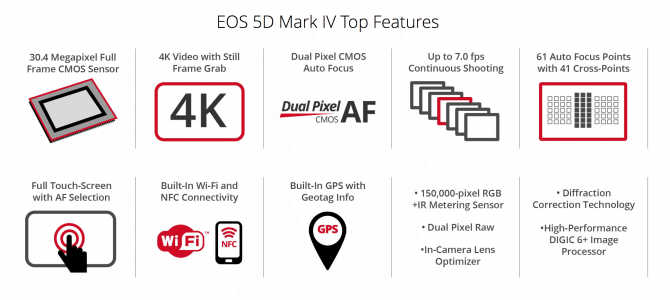
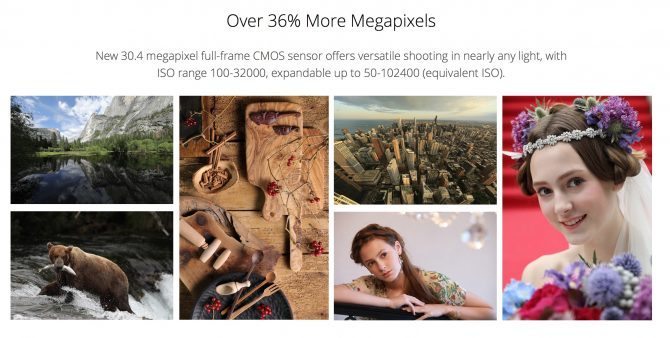 Whilst I do have a Nikon D800, it is old now, so the camera I will compare these stills features to is the excellent Sony A7RII mirrorless camera. Sony don’t make mirrored cameras, for better or worse. I do own the excellent 5DSR but that is a high megapixel specialist camera.
Whilst I do have a Nikon D800, it is old now, so the camera I will compare these stills features to is the excellent Sony A7RII mirrorless camera. Sony don’t make mirrored cameras, for better or worse. I do own the excellent 5DSR but that is a high megapixel specialist camera.
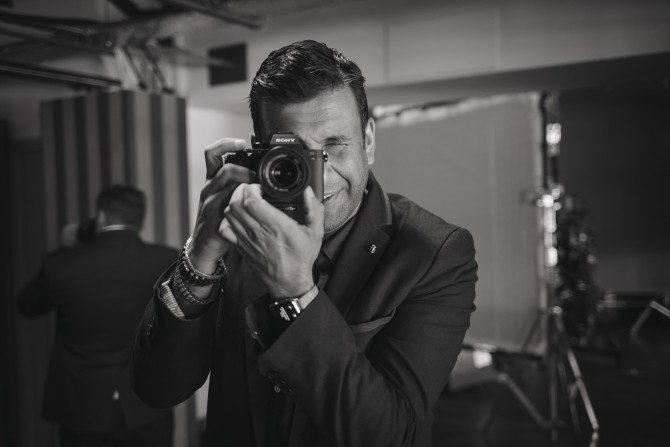
This is what, in stills, the Sony A7RII has in relation to the above specs:
399 auto focus points
5 fps stills
42 megapixels
ISO 100-25,600 (50-102,400 expanded)
5-AXIS stabilised sensor
Electronic EVF
Ability to switch from full frame to APS-C
Built in wifi
Articulating screen
HDMI output to full 4K
Multi interface hot shoe that can support numerous accessories including radio mic and other audio
Lens mount that can take just about any lens with an adaptor
It’s also cheaper!
Back to Canon…
Although I took a fair few stills with my MKIIs (I had two, sold one) the vast majority of their shutter actuations were with timelapse. The main reason for the camera, for me and the most people who read my blog post and follow me on social media, is the video function.
When I posted on Facebook about my disappointment in the specs when the MK IV was announced, I got the expected few comments that said “Get a proper video camera! This is a stills camera!”
This may not be a surprise to many, but I do actually own A LOT of video cameras. I recently sold my biggest and most expensive camera, the amazing Sony F55. With my back being quite weak, I couldn’t see me using big heavy rigs like this for some time, plus with my 3 months off work with no income due to my bad injury incurred shooting the first episode of the start of season 3 of “The Wonder List”, it made sense to sell it. But I still own a lot of cameras:
Sony FS7
Sony FS5
Canon C100
Many Blackmagic cameras
Digital Bolex
The list goes on. This doesn’t include all my stills cameras that shoot video.
Small cameras that shoot great stills and great video are so useful for myself and countless other professionals. Sure there is the fact they take stills, which videos cameras (mostly) don’t. The size is key though – using these small cameras on gimbals is immensely easier. Shooting small crew guerrilla whether fiction, documentary or anything really, is so much easier with a small unassuming little camera. The other key thing, and this is massive, is that there are no “video cameras” that shoot with the huge full frame sensor. This is one of the reasons why the Sony A7 line is doing so well. It has many terrific video features, and the sensor is fully used in 16:9, plus it is very small and takes excellent stills. I love shooting on stills cameras that shoot video – the speed at which I work is greatly increased due to the size.
The Canon 5D MKIV VIDEO FEATURES
My biggest disappointment with the release of the Canon 5D MKIV is with the video specs. With a camera replacement cycle of around 4 years, this means anyone who buys this camera won’t see an improvement in the video features until a MK V comes out, probably in 2020 or later! With Sony refreshing their A7 line every 15-18 months and each time, so far, with huge increase in features, Canon are being left behind. In fact, the specs as they stand fall well short of cameras which have been out for a year or more.
For context and to understand my disappointment, let us take a little look back at the history of the 5D line for video.
The original 5DMKII that came out back in late 2008 was revolutionary for a number of reasons for video. Although it wasn’t the first DSLR to have video recording (that was the crop sensor Nikon D90 and 720p), it was the first one to use full HD video using the whole sensor: full frame 35mm video. This was incredibly unique and really rather special. Whilst the video had its limitations (it was only 30p to start with, and no manual control was offered), some of which were fixed with firmware, it was released at a price point that rocked the industry. What we have today with a huge boom in filmmakers and very affordable gear all stems from that camera.
I first started using it in May 2009, the below video was a simple little thing and the piece that opened my eyes to the possibilities.
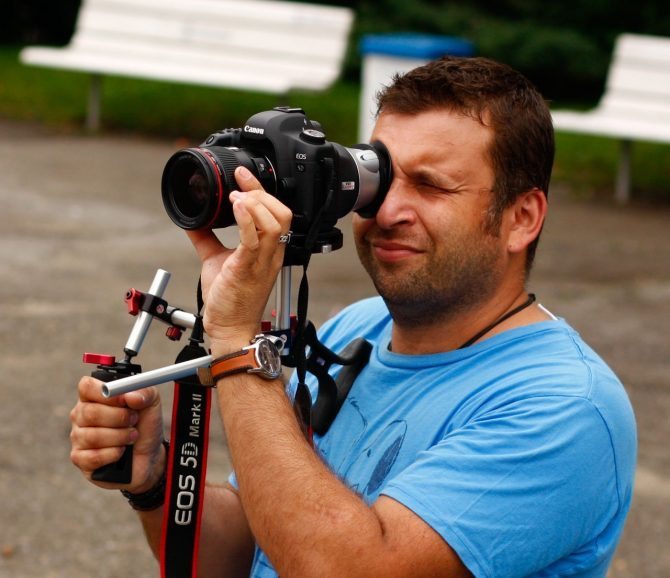
Sofia’s People from Philip Bloom on Vimeo.
Greenpeace: Voices of change. Shot on Canon 5dmkII from Philip Bloom on Vimeo.
I fell in love with the camera, like many others. I learned about the pain in the arse dual system audio that was needed, as audio on the camera was incredible poor. I learned to accept and deal with moire, aliasing and rolling shutter. Then the 7D came out, which gave us an APS-C version, but it also gave us 24p and 25p for the first time plus 720p slow motion at 50p and 60p. The work I used it for was incredibly varied, from commercials to docs to even doing a few weeks work with the camera on George Lucas’ last film, Red Tails.
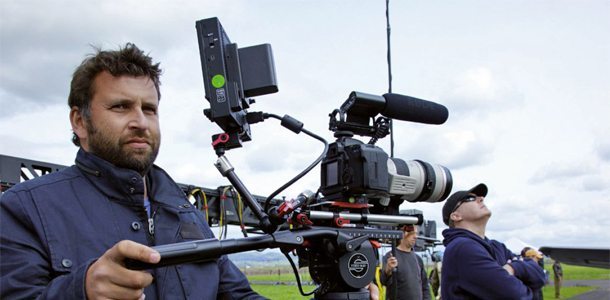
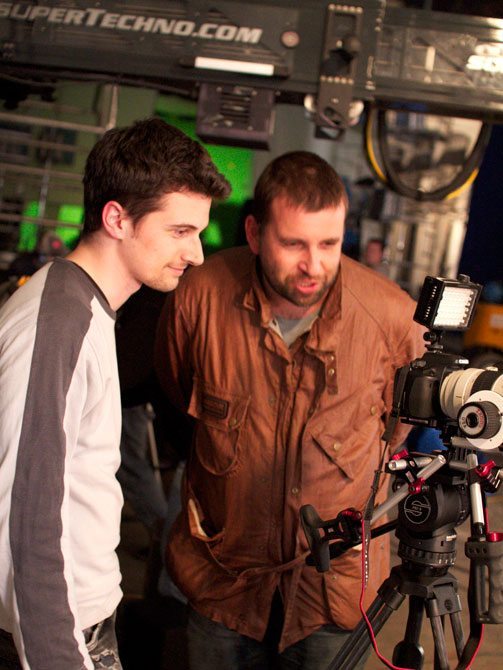
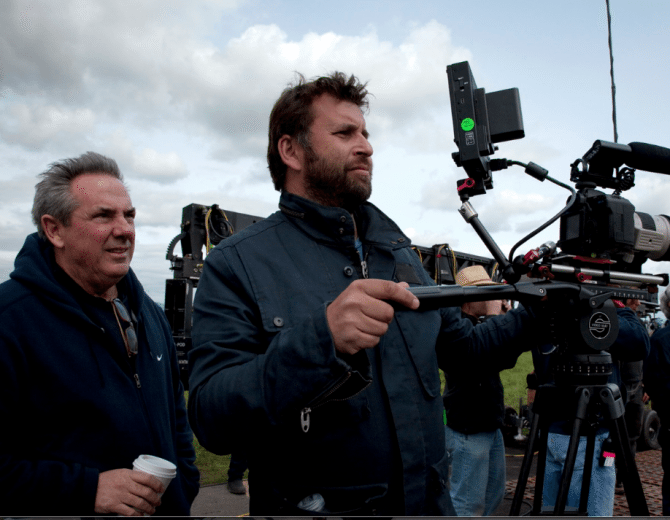
Behind the Scenes on Lucasfilm’s Red Tails with the Canon DSLRs from Philip Bloom on Vimeo.
San Francisco’s People. Canon 5DmkII 24p from Philip Bloom on Vimeo.
Skywalker Ranch from Philip Bloom on Vimeo.
A day at the races from Philip Bloom on Vimeo.
Other manufacturers were slow to follow, only recently have Nikon started to bring out cameras with half decent video. Sony were very slow to start with but are now flying high with the A7S, A7RII and A7S II. Panasonic have really taken video seriously in their cameras. The GH4 is a very powerful little camera with some very nice professionals features, just with a small sensor. Samsung looked promising with the NX1 but have now pulled out of making “proper” stills cameras.
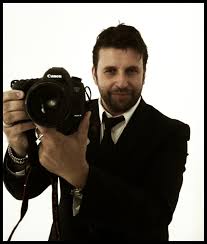
Canon 5Dmk3 video review from Philip Bloom on Vimeo.
The MK III brought a number of improvements. Better ISO performance, better codec, an almost total elimination of moire and aliasing and clean HDMI out (with firmware upgrade). We still only had slow motion in 720p at 50p or 60p. The MK II of course had no slow motion. There was also something aesthetically missing in the MKIII, some of the magic of the MKII had gone with the image improvements. This was way back in March 2012. It has been a long wait to see a replacement.
Canon brought out many cheaper DSLRs which really democratised the market, but these have never really improved like they should have; the features have been incremental at best. Only the 70D and 80D with the revolutionary dual pixel autofocus were impressive innovations.
The 1DX came out, which I bought and really liked the video from it, below are two examples of it. I didn’t keep it long, as the 1DC came out not long after and I traded it in (more about that to come!)
Olly Knights: If not now when from Philip Bloom on Vimeo.
Portrait of a projectionist from Philip Bloom on Vimeo.
In the meantime, Canon brought out their Cinema line of video cameras. The C300 first then the C100, C500, C100 MKII, C300 MKII and of course the wonderful and still something I own, the 1DX based 1DC. The 1DC was incredibly overpriced when it came out, it was well over £10,000. What it gave us, though, was 4K at 24p, 25p. Full frame full HD 24p, 25p, 30p, 50p, 60p and Super 35mm mode too! It has Canon Log for flatter images, and the 4K was recorded in the antiquated and bloated Motion JPEG, the upside of which was that the image looks so clean and like moving photos. There was no limitation on record time, as this was taxed as a video camera.
The 1DC was far from perfect as it had no peaking, no punch in focus check whist recording, no zebras, no 4K output, audio was still atrocious…but oh my was it a wonderful camera, and I created lots of great stuff with it that I look at today and go “wow” that still looks great!
4K: Bitten By The Frost from Philip Bloom on Vimeo.
From Chicago to the Moon from Philip Bloom on Vimeo.
The C300 made huge inroads into the market. I owned one for about 3 years myself and sold it when I bought the Sony F55. It was a great camera which really only lacked decent slow motion, 720p again. It seems Canon have a real issue with giving their cameras good slow motion.
Many people feel that Canon limit the DSLR line so as to not compete with their C line. Well, the 1DC is 3 years old, and there is no sign of a replacement which is a real shame. I personally do not believe making their DSLR line feature rich will affect their video market. Sony sell a huge amount of A7s etc cameras and also a huge amount of their excellent video cameras, the FS5 and FS7. The Sony video cameras have superior codecs, professional connections, better ergonomics… essentially better video features all round. There are super 35mm though. You can get a pseudo full frame with a Metabones Speed Booster though.
So what is so wrong with the video features of the 5D MK IV?
The future of video is clearly 4K. I have been shooting 4K for over 4 years. The RED Epic was my first 4K camera, then I got the 1DC which gave me wonderful 4K in a sort of compact body. The downside to both of these is that they aren’t recording full frame. The RED was Super 35mm and the 1DC shot 4K with a 1.3x crop called APS-H. I could live with this for the convenience of having 4K in a Canon. I love the Canon look, it’s gorgeous, and that is one of the reasons why I have been so looking forward to the MK IV coming out.
For a camera that will have a shelf life of 4 years, probably, what it gives the user is simply not good enough. Here are the issues:
- The 4K is not full frame, it is not even 1.3x crop like the 1DC. It is 1.74x crop which is HUGE. Whilst the depth of field technically won’t be affected by such a crop, the field of view is. To replicate the field of view of a Canon 85mm F1.2 you will need to look at the 50mm F1.2, and your depth of field will be substantially less shallow because of that. This sucks.
- The 4K is only up to 30p. The rather nice 1DX MKII that came out earlier this year recorded 4K up to 50p/ 60p and it was with a 1.3x crop like the 1DC.
- There is no 4K HDMI out, so you are stuck with the ancient motion jpeg format in 4K.
- The 4K is DCI 4096×3840, and there is no option for UHD 3840×2160.
- The HD is ALL-I and not motion JPEG (good!), whilst we do get 1080p 50p/60p which is fine… the 120fps high frame rate mode is incredibly only 720p. The 1DX MKII does this in full HD.
- There are no proper video functions that really should be in there. There is no C-Log mode. There is no peaking, there are no zebras. There is still no punch in focus check whilst recording. It’s quite astonishing. I had been asking Canon for peaking on my 1DC for years. It never came.
I didn’t expect all the whizzy features of the Sony A7S line to be in this camera, but I did expect a lot more than they are giving us. Yes, the dual pixel autofocus of the camera is astonishing. I fell in love with it in the 1DX MK II with its touch focus tracking, which is also on this camera.

The reason the crop is so huge is that you only actually need 8 megapixels for 4K. Having 30 megapixels means it would need some decent internal processing to reduce the image to that size without pixel binning (which would cause aliasing and moire). They simply went for the easiest option, which is sample it one for one, hence this very impractical crop.
You will be able to use 3rd party APS-C lenses for Canon DSLR which are optimised for a lesser crop, but Canon’s own EF-S lenses cannot be used, as they will protrude too far and hit the mirror.
4K is the future, and full frame is my favourite video look by a long way. The MK II video was special because it was full frame. The Sony A7 line 4K is NO CROP, it is full frame. The Sony A7R II has a 42-megapixel sensor yet is full frame in 4K. Yes, is has minor aliasing and moire, but it is hard to see. I shoot a lot of video with this camera as I love its look, and the stills are to die for AND the 5-axis stabilised sensor means you can get stable video without rolling shutter micro jitters on any lens, regardless of whether it has IS in the lens or not. Don’t get me wrong, the Sony cameras are not perfect at all! They have their own issues and many quirks.
The Canon 5D MKIV of course does not have a stabilised sensor. The A7R II is a the best hybrid camera out there for sure if you need both video and amazing stills, but if your preference is video then the A7SII is the one to go for. Full frame stunning video, S-LOG, Peaking, Zebras, Clean 4K HDMI out, 1080p slow motion up to 120fps, stabilised sensor, MIND BLOWING low light performance. It is without question THE best stills camera/ video camera hybrid out there. It cannot do Super 35mm mode in 4K though, as the sensor does sample 1:1 (the camera is only 12mp) but you can get that with the incredible clear zoom feature that is sheer voodoo. Below is an example of the clear image zoom function on the Sony A7RII
4K: Martial Eagle eating bird claw. Sony A7R II 400mm, 4K S35 mode, 2x Clear image zoom from Philip Bloom extras on Vimeo.
I was excited about a full frame 4K 5D model, but now with it being 1.74x crop I just cannot see me buying one. It makes no sense to me. As I mentioned earlier, the magic is the full frame, and not having that means that, for me, the Sony cameras are still easily the ones to go for. The A7RII has very impressive video autofocus, though the A7SII doesn’t. There are lots of things to weigh up when looking to buy a camera. Personally, I am very tempted to sell my 1DC and put that money towards the 1DX MKII which I did a blog post on recently and shot the below video with. It has much better frame rates and only 1.3x crop in 4K, which I can live with for the benefit of the 50p/ 60p in 4K. The 120fps HD is full frame.
Testing out the video autofocus of the Canon 1DX MK II and the Sony A6300
The Brighton Beach Concerto from Philip Bloom on Vimeo.
Canon 1DX MK II Autofocus tease from Philip Bloom Reviews & Tutorials on Vimeo.
I don’t know what the future is for Canon when it comes to video in their stills camera. They invented the damn thing but have now lost that market. With the vast majority buying the camera for stills, I don’t think they are going to be too worried, but there is a very large number of people who will jump ship now, people who had been holding on. Not having anything close to full frame is massive cock-up, to be blunt. I cannot see how this can be remedied in firmware, maybe Magic Lantern can do something but really, if you buy this camera in the hope ML can crack it, I think you are making a mistake. Who knows how long, if they can do it, and what they can make it do? There are cheaper cameras than the 5D MKIV out there right now that whip this cameras bottom with video RIGHT NOW!
The only real hope for the 5D to continue its legacy in the video world and for people to continue using them is the oft rumoured 5DC; a cinema-centric version with lower megapixels and all those 1DX 2 features but much more. Clean 4K HDMI out, peaking etc…the usual!
I am keen to still try it out and see what the real world deal would be to cope with that crop, but I won’t buy one. It is too expensive for something that I know I won’t use compared to my Sony A7SII. I do love that Canon look still though, so that really leaves me with only once choice…anyone want to buy my 1DC so I can get a 1DX MKII please? She’s in good nick! Drop me a mail if interested! 🙂

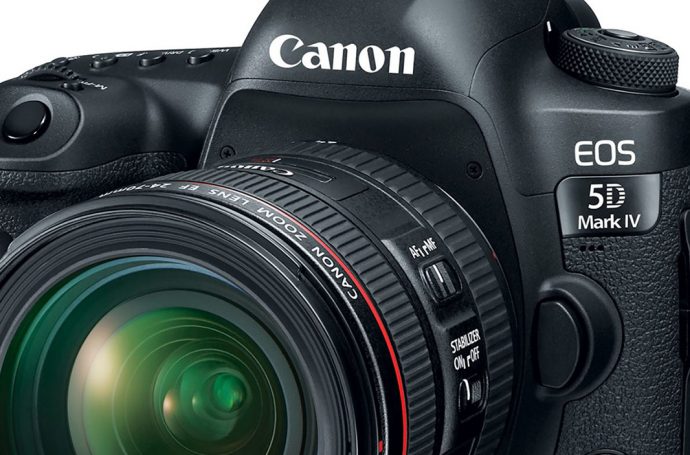

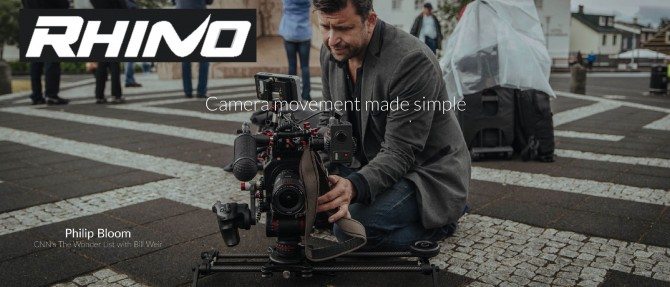

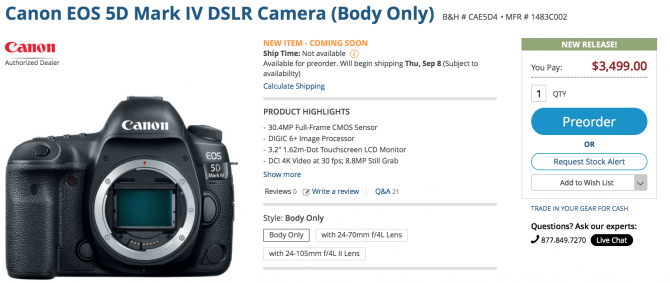
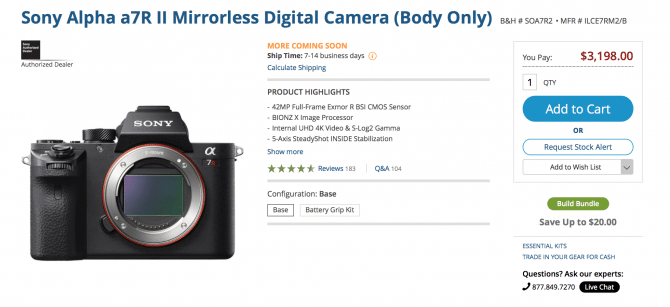
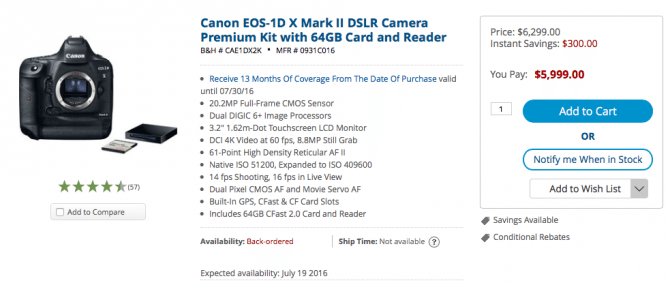
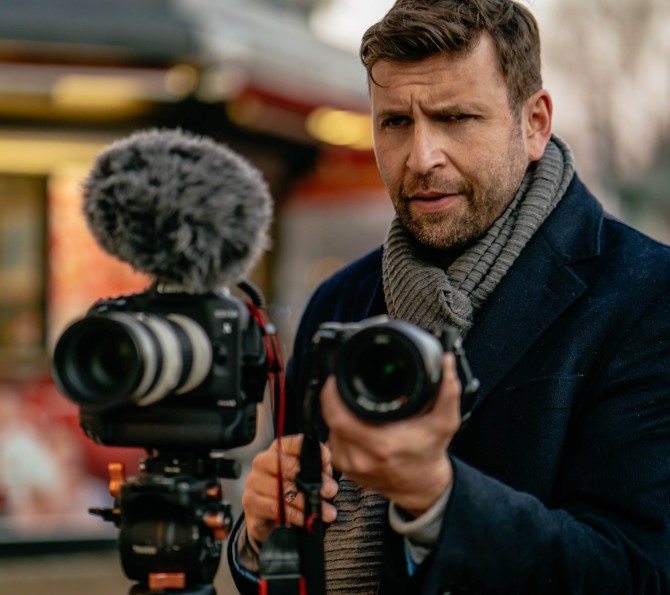

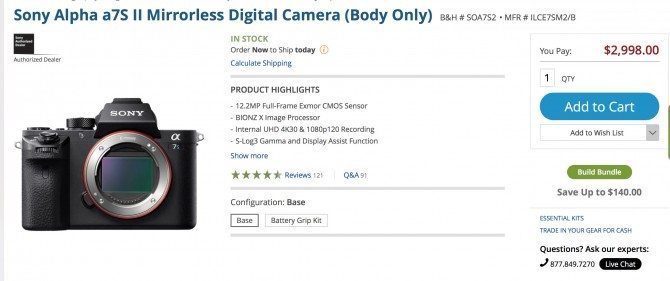

2 comments